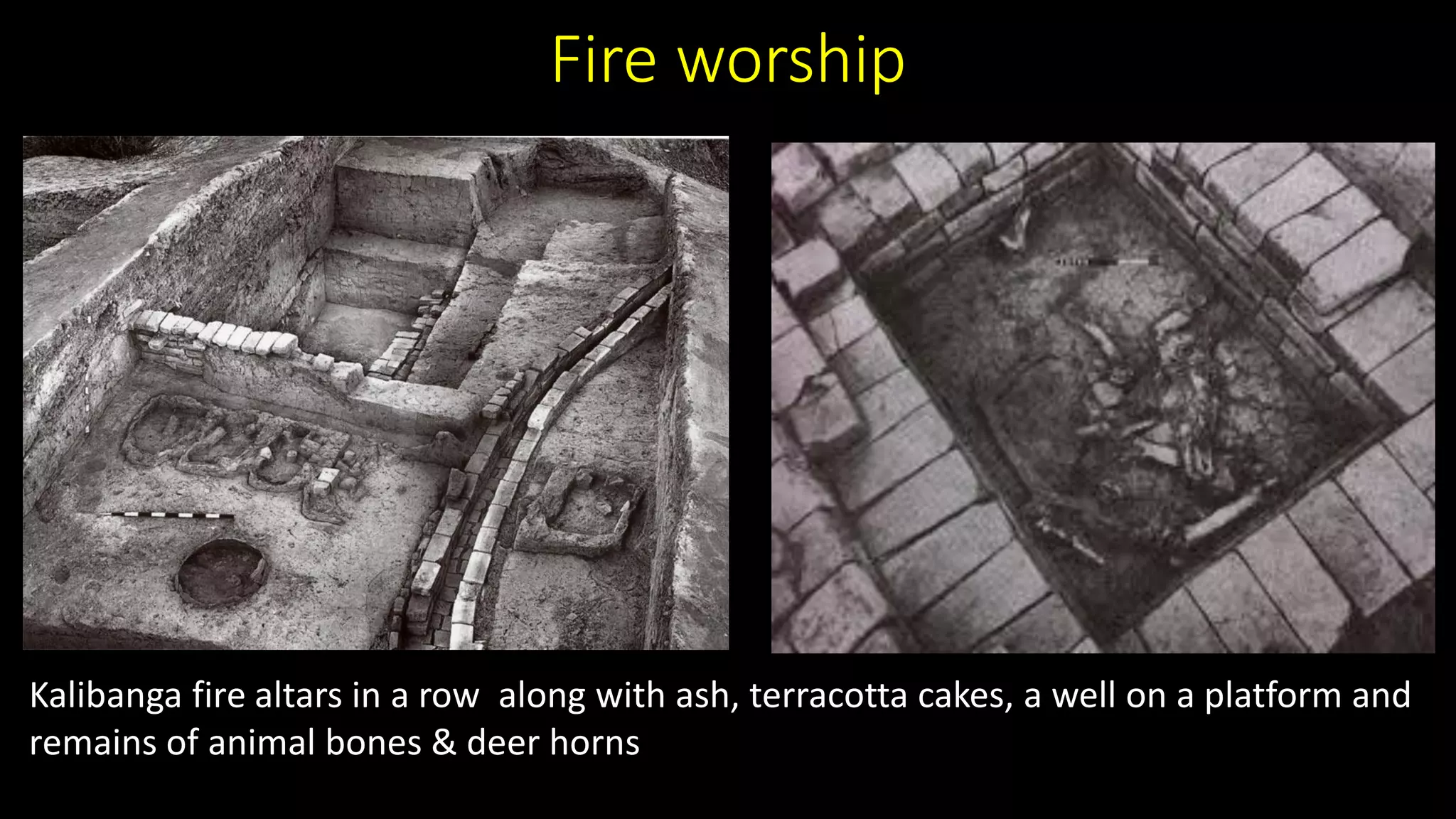The document discusses religion in the Indus Valley Civilization based on archaeological remains. It summarizes that the civilization likely had nature, fertility, and fire-based rituals centered around a mother goddess and Pashupati figure. Ritual aspects included figurines, seals depicting sacrifice, and elaborate burial practices. However, the lack of written texts means the philosophical aspects of their religion cannot be fully understood and interpretations are based on assumptions from material artifacts that show some regional variations.








![• Showing a female deity battling two tigers & standing above an
elephant.
• A single Indus script depicting a spoked wheel is above the head of
the deity.
• On the reverse, an individual is spearing a water buffalo with one
foot pressing the head down and one arm holding the tip of a horn.
A gharial [crocodile] is depicted above the sacrifice scene and a
figure seated in yogic position, wearing a horned headdress, looks
on. The horned headdress has a branch with three prongs or leaves
emerging from the center.
Female deity on a Plano convex tablet Harappa](https://image.slidesharecdn.com/ivcreligionpdf-210920160554/75/Ivc-religion-pdf-9-2048.jpg)
































![Mundigak: Period IV [2900-2400 BCE]
Casal: monumental structure at Mundigak called as "Temple"
Jim Shaffer & C.Petrie: Although there is nothing to indicate that this was a religious structure, it was certainly
not a habitation either. Whatever the function, it presents an interesting contrast with the rest of the site.](https://image.slidesharecdn.com/ivcreligionpdf-210920160554/75/Ivc-religion-pdf-42-2048.jpg)


